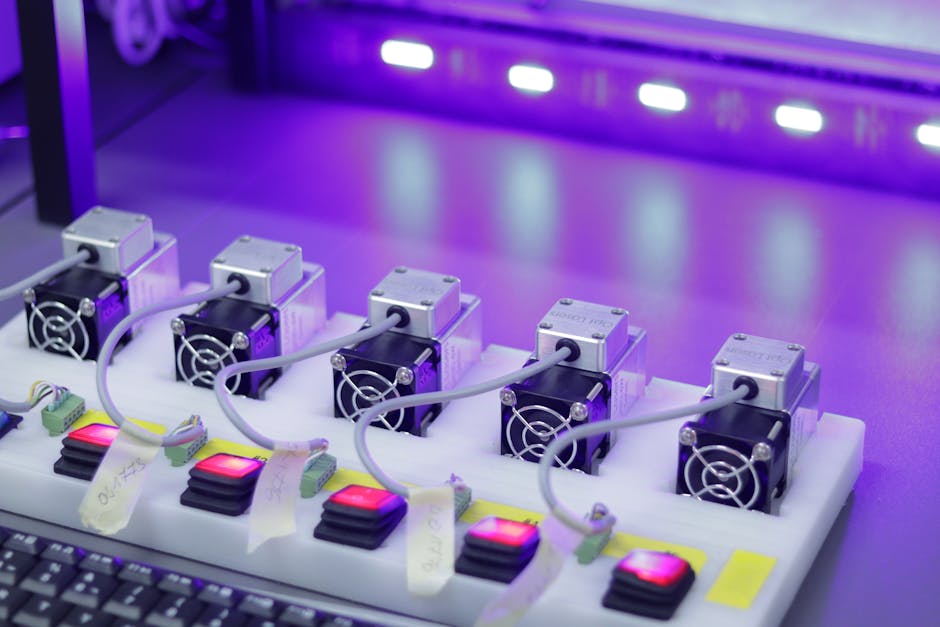Learning The “Secrets” of
 “Maximizing Efficiency: A Guide to CNC Machining for Beginners”
“Maximizing Efficiency: A Guide to CNC Machining for Beginners”
If you’re new to the world of manufacturing and production, you may have heard the term “CNC machining” thrown around. But what exactly is it and how can it benefit your operations? In this article, we’ll dive into the basics of CNC machining and give you the knowledge you need to make informed decisions for your business.
What is CNC Machining?
CNC (Computer Numerical Control) machining is a manufacturing process that uses computerized controls and software to precisely control the movement of cutting tools and machinery. This allows for highly accurate and efficient production of complex parts and components. CNC machining is commonly used in the production of metal, plastic, and wood products across a wide range of industries.
How Does It Work?
CNC machining involves a series of steps that work together to produce a final product. Let’s break it down:
1. Design – The first step in CNC machining is designing the part or component that needs to be produced. This is typically done using CAD (Computer-Aided Design) software, which allows for precise and detailed designs.
2. Programming – Once the design is complete, it is then translated into a series of instructions that the CNC machine can understand. This is done through CAM (Computer-Aided Manufacturing) software, which converts the design into a series of G-code commands that control the movement of the machine.
3. Setup – Before production can begin, the CNC machine needs to be set up with the right tools and materials. This includes loading the appropriate cutting tools and materials, as well as entering the necessary commands and codes into the machine’s computer.
4. Production – Once the setup is complete, the CNC machine can begin producing the part or component. The machine follows the programmed instructions to precisely cut, drill, and shape the material into the desired form.
5. Quality Control – After production is complete, the finished product is inspected to ensure it meets the desired specifications. Any errors or imperfections can be corrected and the process can be repeated until the desired result is achieved.
The Benefits of CNC Machining
There are several advantages to using CNC machining in your production process. These include:
– Precision: CNC machines are incredibly accurate and can produce parts with tight tolerances. This means that you can expect consistent and precise results every time.
– Efficiency: With the use of computerized controls, CNC machining can produce parts at a much faster rate than traditional methods. This saves time and labor costs, making it a cost-effective solution for production.
– Flexibility: CNC machines can be programmed to produce a wide range of parts and components, making them a versatile option for various industries and applications.
– Automation: Once the CNC machine is set up and programmed, it can run on its own without the need for constant human supervision. This allows for increased productivity and frees up employees to focus on other tasks.
Tips for Getting Started
If you’re considering implementing CNC machining into your production process, here are some tips to keep in mind:
1. Start small – It can be tempting to jump into CNC machining with a big project, but it’s best to start small and gradually increase the complexity and size of your projects as you become more familiar with the process.
2. Invest in training – While CNC machining is highly automated, it still requires skilled operators to set up and program the machines. Investing in training for yourself or your employees will ensure that you get the most out of your equipment.
3. Choose the right machine – There are many types of CNC machines available, each with its own set of capabilities and applications. Do your research and choose the machine that best fits your needs and budget.
In conclusion, CNC machining is a valuable tool for modern production processes. With its precision, efficiency, and flexibility, it can help businesses of all sizes achieve their production goals. By understanding the basics and following these tips, you can make the most out of CNC machining for your operations.
3 Tips from Someone With Experience
This post topic: Auto & Motor